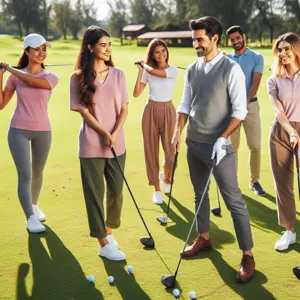There’s an undeniable thrill that comes with hitting the open road on your motorbike, but what if you could elevate that experience even further? Customizing your motorbike allows you to transform a factory model into a true reflection of your personality and riding style.
Whether you’re a seasoned rider or a newcomer to the biking world, personalizing your ride can enhance not only its aesthetic appeal but also its performance and comfort. From selecting the perfect paint job and installing unique accessories to fine-tuning the engine and optimizing handling, the possibilities are endless. In this comprehensive guide, we will explore the art of motorbike customization, sharing essential tips, expert advice, and inspiration to help you unlock your ride’s full potential and make it truly yours. Get ready to embark on an exciting journey to create a motorbike that stands out on every road and resonates with who you are as a rider!
1. Introduction to Customizing Your Motorbike

Motorbikes are more than just a mode of transportation; they are an expression of individuality and freedom on two wheels. Customizing your motorbike allows you to transform a standard machine into a unique masterpiece that reflects your personal style, riding preferences, and performance needs. Whether you’re a seasoned biker looking to make your mark or a newcomer eager to personalize your ride, the journey of customization is both exciting and rewarding.
At its core, customizing a motorbike is about making it your own. From selecting the perfect paint job to upgrading the exhaust system for that unmistakable growl, every modification is a chance to showcase your personality. Perhaps you dream of a sleek café racer, a rugged off-road beast, or a classic cruiser – the possibilities are endless. Customization not only enhances aesthetics but can also improve functionality, comfort, and overall performance.
However, diving into the world of motorbike customization can be overwhelming. With a myriad of options available, knowing where to start is crucial. In this guide, we’ll explore the essential elements of customizing your motorbike, offer tips on how to choose the right parts, and share insights on making informed decisions that align with your vision. So gear up, embrace your creativity, and get ready to unlock the full potential of your ride!
2. Understanding Your Motorbike’s Anatomy
Understanding your motorbike’s anatomy is essential for any enthusiast looking to customize their ride effectively. A motorbike is not just a machine; it’s a complex assembly of components working in harmony to deliver the exhilarating experience of open-road freedom. Grasping the intricacies of these parts will empower you to make informed decisions when it comes to modifications, ensuring that each enhancement aligns with your riding style and performance goals.
Start with the frame, the backbone of your bike, which determines its overall strength and handling characteristics. A lightweight frame can enhance agility, while a sturdier one may provide stability at higher speeds. Next, delve into the engine, the heart of your motorbike. Understanding its type—be it a single-cylinder, parallel-twin, or V-twin—will help you choose performance upgrades, such as exhaust systems or air filters, that can unlock more horsepower and torque.
Don’t overlook the suspension and braking systems. The right suspension setup can drastically improve comfort and handling, while high-quality brakes are crucial for safety. Upgrading these components can transform your ride, providing better control and responsiveness on the road.
Finally, familiarize yourself with the electrical system, which powers everything from your headlights to your digital display. Customizing this aspect can enhance functionality and aesthetics, allowing you to add features like LED lights or advanced gauges.
By understanding the anatomy of your motorbike, you’ll not only gain appreciation for its engineering but also equip yourself with the knowledge to make choices that can elevate your riding experience to new heights. Whether you’re aiming for improved performance, comfort, or style, a solid grasp of your bike’s components will serve as the perfect foundation for your customization journey.
3. Setting Your Goals: Functionality vs. Aesthetics

When it comes to customizing your motorbike, it’s essential to strike the right balance between functionality and aesthetics. Before diving headfirst into the world of aftermarket parts and creative modifications, take a moment to reflect on what you truly want from your ride. Are you looking to enhance performance, improve handling, or simply make a visual statement? Understanding your priorities will guide your decisions and ensure that your customization journey aligns with your ultimate vision.
Functionality should always be at the forefront of your customization goals, especially if you ride frequently or for long distances. Upgrading components such as suspension systems, brakes, and tires can significantly improve your bike’s performance and safety. For instance, investing in high-quality suspension can provide a smoother ride over rough terrain, while performance exhaust systems can enhance engine efficiency and sound. These practical modifications not only ensure a better riding experience but can also increase the longevity of your motorcycle.
On the other hand, aesthetics play a vital role in personalizing your bike and making it truly yours. From vibrant paint jobs to custom decals, the visual appeal of your motorbike reflects your personality and style. Consider the overall theme you want to achieve—whether it’s a sleek, modern look or a vintage, retro vibe. Choosing the right colors, finishes, and accessories can transform your bike into a stunning work of art that stands out on the road.
Ultimately, setting clear goals around functionality and aesthetics will steer your customization process, ensuring that your motorbike not only performs exceptionally but also embodies your unique identity. As you embark on this exhilarating journey, remember that the best modifications are those that harmoniously blend form and function, creating a ride that you’ll be proud to show off and excited to ride.
4. Choosing the Right Customization Style
When it comes to customizing your motorbike, one of the most exciting yet challenging aspects is choosing the right customization style that reflects your personality and riding preferences. The world of motorcycle customization is vast, filled with a myriad of styles, each offering its own unique flair and functional benefits. Whether you’re drawn to the sleek lines of a café racer, the rugged aesthetics of a scrambler, or the bold presence of a chopper, understanding these styles will help you carve out your own identity on two wheels.
Start by considering your riding habits and what you want your bike to convey. A café racer, with its minimalist design and retro appeal, is perfect for those who crave speed and agility, often reminiscent of the 1960s British motorcycle culture. If you enjoy tackling off-road trails, a scrambler might be your ideal choice, emphasizing versatility and adventure with its higher stance and rugged tires. On the other hand, if you’re looking for a show-stopping head-turner, the chopper style, with its extended front forks and custom frames, can give your ride a one-of-a-kind look that stands out on any road.
Once you’ve settled on a style, the fun really begins! Dive into the details—consider your color palette, finish, and materials. For instance, a matte black finish can lend a stealthy vibe to a café racer, while vibrant colors and chrome accents may enhance the eye-catching nature of a chopper. Don’t forget about functionality; the right handlebars, seat design, and even exhaust system can dramatically alter your riding experience.
Moreover, researching existing custom builds and connecting with fellow motorbike enthusiasts can provide inspiration and insight. Online communities and local bike shows are great places to explore different styles and gather tips from seasoned customizers. Ultimately, choosing the right customization style is about more than aesthetics; it’s about creating a bike that feels like an extension of yourself, tailored to your preferences and lifestyle. So take your time, enjoy the process, and unleash your creativity—your perfect ride is waiting to be unlocked!
5. Essential Tools for Customizing Your Bike

Customizing your motorbike is a thrilling journey that allows you to express your personality and enhance your riding experience. However, before you dive into the world of modifications, it’s essential to equip yourself with the right tools. Having the proper tools on hand not only makes the process smoother but also ensures that the modifications you make are safe and effective. Here’s a comprehensive list of essential tools you’ll need to unleash your bike’s full potential.
**1. Basic Hand Tools:**
Start with the fundamentals—wrenches, sockets, screwdrivers, and pliers. A good set of metric and standard sizes will cover most fasteners you encounter on your bike. Make sure to invest in a torque wrench as well, as it helps you apply the right amount of force, preventing damage to parts and ensuring your modifications are secure.
**2. Specialty Tools:**
Certain modifications may require specific tools. For instance, if you plan to upgrade your suspension or brakes, a fork oil seal driver and brake bleeder tool will be invaluable. Similarly, if you’re altering your bike’s electrical system, a multimeter will help you diagnose and troubleshoot any issues.
**3. Cutting and Grinding Tools:**
If your customization involves fabricating or altering metal components, cutting and grinding tools will be essential. A Dremel tool or angle grinder can help you shape and refine parts, while metal files ensure smooth edges that won’t snag or cause injury.
**4. Paint and Finishing Supplies:**
A fresh coat of paint can dramatically change the look of your bike. Invest in quality spray paint designed for automotive use, as well as clear coat for protection. Don’t forget sandpaper and masking tape to prep surfaces and achieve clean lines.
**5. Storage and Organization:**
As you customize your bike, keeping your workspace organized is crucial. Toolboxes or pegboards can help you keep your tools within easy reach, while bins and containers ensure that small parts are not lost in the shuffle. An organized workspace will make your customization process much more enjoyable and efficient.
**6. Safety Gear:**
Last but certainly not least, safety gear is a must. Always wear gloves to protect your hands from sharp edges and chemicals. Safety glasses will shield your eyes from debris during cutting or grinding, and a dust mask is essential when working with paint or creating dust.
With these essential tools at your disposal, you’ll be well-equipped to tackle any customization project that comes your way. Remember, the journey to customizing your motorbike is just as exciting as the destination, so take your time, enjoy the process, and ride away with a bike that truly reflects your style and passion.
6. Upgrading Your Motorbike’s Performance
Upgrading your motorbike’s performance is not just about speed; it’s about enhancing the overall riding experience and making your machine more responsive to your desires. Whether you’re a street rider, a touring enthusiast, or a track-day racer, there are several key areas you can focus on to elevate your bike’s performance to new heights.
**Engine Modifications**
One of the most impactful ways to boost performance is by tuning or modifying your engine. This could involve installing a high-performance air filter and exhaust system, which can significantly enhance airflow and increase horsepower. For those looking for more power, consider a performance ECU (Engine Control Unit) remap. This tweak optimizes fuel delivery and ignition timing, allowing your motorbike to unleash its full potential.
**Suspension Upgrades**
Performance isn’t solely about speed; handling plays a crucial role as well. Upgrading your suspension can drastically improve your ride quality and control. High-quality shocks and adjustable forks allow for better customization based on your riding style and the terrain you’re tackling. This means you’ll enjoy smoother rides, tackle corners with confidence, and experience less fatigue on longer journeys.
**Brake Enhancements**
Performance upgrades should also extend to your braking system. Swapping out your stock brake pads for higher friction options, upgrading to stainless steel brake lines, or even investing in a complete brake system can dramatically enhance stopping power and feel. Good brakes not only improve safety but also boost your confidence while riding, allowing you to push your bike harder in corners and during emergency situations.
**Tires for Traction**
Don’t overlook the importance of tires when upgrading performance. The right set of tires can make all the difference in grip and handling. Depending on your riding style, whether it’s sport, touring, or off-road, choose tires that provide optimal traction and stability. Additionally, regularly maintaining proper tire pressure and tread depth ensures that you get the best performance out of your investment.
**Final Touches**
Lastly, consider lightweight components made from materials like carbon fiber or aluminum. Reducing the overall weight of your bike can enhance agility and acceleration without compromising structural integrity. Every little upgrade adds up, creating a motorbike that not only looks great but performs like a dream.
By focusing on these essential upgrades, you can transform your motorbike into a personalized powerhouse that matches your riding style and meets your performance expectations. Remember, the journey of customization is as rewarding as the destination, so take your time, research your options, and enjoy the process of unlocking your ride’s true potential.
7. Customizing the Exhaust System for Sound and Performance

When it comes to personalizing your motorbike, few modifications are as impactful as customizing the exhaust system. Not only does a well-chosen exhaust enhance the sound of your ride, giving it a distinctive growl that turns heads, but it can also significantly improve performance. The right exhaust system can boost horsepower and torque, making your bike feel livelier and more responsive.
Start by considering the type of sound you want to achieve. Do you prefer a deep, throaty rumble that echoes through the streets, or a high-pitched roar that lets everyone know you’re coming? Different exhaust systems produce different sounds, so it’s essential to do your research. Brands often offer sound clips and reviews, allowing you to hear the difference before making a purchase.
Performance is another critical aspect of exhaust customization. Aftermarket exhaust systems are designed to improve airflow, which can lead to better engine performance. Look for options that are lightweight and made from high-quality materials like stainless steel or titanium, as these can reduce weight and enhance durability. Moreover, some systems are specifically engineered for your bike model, ensuring an optimal fit and performance boost.
Don’t forget about the aesthetic appeal! A custom exhaust can transform the look of your motorbike, providing a sleek, aggressive profile that reflects your personal style. Whether you opt for a classic slip-on, a full system, or a unique header configuration, the visual impact can be just as significant as the auditory experience.
Finally, consider the legal regulations in your area regarding exhaust noise levels and emissions. While it’s tempting to go for the loudest and most aggressive option, ensure your choice complies with local laws to avoid fines or performance issues down the line.
In essence, customizing your motorbike’s exhaust system is a multifaceted endeavor that combines sound, performance, and aesthetics. With careful consideration and the right selection, you can unlock the true potential of your ride, ensuring it sounds as thrilling as it looks while delivering the performance you crave.
8. Enhancing Suspension for a Smoother Ride
When it comes to customizing your motorbike, one of the most impactful upgrades you can make is enhancing its suspension. A well-tuned suspension system not only improves your overall riding experience but also plays a crucial role in the bike’s handling, stability, and comfort. Let’s delve into how you can elevate your ride with the right suspension tweaks.
First and foremost, consider upgrading to high-performance shock absorbers. Stock shocks may serve their purpose, but they often leave much to be desired in terms of responsiveness and adjustability. Investing in premium aftermarket shocks allows you to fine-tune your bike’s suspension settings based on your riding style and terrain. Whether you’re carving up winding mountain roads or cruising down city streets, adjustable rebound and compression settings can drastically improve your ride quality.
Additionally, don’t overlook the importance of fork upgrades. Forks are responsible for absorbing impacts from the road, and upgrading to a set of high-quality forks can significantly enhance your motorbike’s stability. Look for forks that offer preload adjustment, which allows you to customize the ride height and stiffness to suit your preferences. As a bonus, a new set of forks can also add a sleek, personalized aesthetic to your bike.
Another essential aspect to consider is the weight distribution of your bike. Properly adjusting your bike’s suspension can help achieve optimal weight balance, which is vital for cornering and braking performance. Lowering or raising the bike’s rear or front can dramatically affect how it handles. Make sure to consult with a suspension specialist to find the best configuration for your specific model.
Lastly, regularly maintaining your suspension system is crucial for ensuring its longevity and performance. Check the seals, fluid levels, and overall condition of your suspension components. A simple maintenance routine can prevent costly repairs down the road and keep your ride smooth and responsive.
By enhancing your motorbike’s suspension, you not only improve ride comfort but also unlock the true potential of your machine, making every journey an exhilarating experience. Whether you’re a weekend warrior or a daily commuter, investing in a superior suspension system is a step towards achieving the perfect ride.
9. Personalizing the Aesthetics: Paint, Graphics, and Accessories
When it comes to making your motorbike truly yours, personalizing the aesthetics is where the magic happens. The right paint job, eye-catching graphics, and carefully chosen accessories can transform your ride from a standard machine into a unique expression of your personality and style.
**Paint** is the first step in this transformative journey. The color palette you choose can say a lot about you—bold reds and blacks for the edgy rider, soft pastels for those who prefer a more vintage look. Consider opting for a custom paint job that adds depth and dimension with techniques like metallic finishes or matte coatings. Whether you go for a sleek single color or a vibrant multi-toned design, don’t shy away from creativity. This is your chance to make a statement!
Next comes **graphics**, which can enhance your bike’s visual appeal and reflect your interests. From racing stripes to intricate murals, vinyl graphics can be applied with relative ease. Think about incorporating elements that resonate with you—perhaps a tribute to your favorite band, a nod to your favorite movie, or even symbols representing your passions. With countless designs available, you can easily find or create graphics that align perfectly with your vision.
Finally, don’t underestimate the impact of **accessories**. From custom mirrors and grips to unique exhausts and LED lighting, the right accessories can elevate your bike’s overall look while providing functionality. Choose parts that complement your color scheme and graphics; for instance, sleek black accessories can create a stunning contrast against a vibrant paint job. Additionally, consider practical accessories like saddlebags or a custom seat that not only enhance aesthetics but also improve your riding experience.
Remember, personalizing your motorbike is about more than just aesthetics—it’s about creating a ride that feels like an extension of yourself. Take your time to explore different options, gather inspiration from other custom builds, and most importantly, let your creativity shine. With the right combination of paint, graphics, and accessories, you’ll unlock not just your ride, but also a piece of your identity on two wheels.
10. Choosing the Right Tires for Your Riding Style
When it comes to customizing your motorbike, selecting the right tires is a crucial element that can dramatically enhance both performance and safety. Tires are your bike’s only contact with the road, and their importance cannot be overstated. The right set can elevate your riding experience, while the wrong choice can lead to a bumpy ride or, worse, an accident.
First, consider your riding style. Are you a casual weekend cruiser, an aggressive sport rider, or an adventurous off-road enthusiast? Each style demands a different type of tire. For instance, sport riders may lean towards tires that offer superior grip and responsiveness, designed for high-speed cornering on smooth asphalt. Look for tires labeled with performance specifications, such as “supersport” or “track,” which provide enhanced handling and traction.
If your adventures take you off the beaten path, you’ll want to explore dual-sport or knobby tires. These designs feature deeper treads to grip loose gravel, dirt, and mud, ensuring you maintain control on unpredictable terrains. Off-road tires often sacrifice some smoothness on paved surfaces, so it’s important to find a balance that suits your typical routes.
For those who prefer a more laid-back approach, touring tires may be the ideal choice. Designed for long distances and comfort, these tires provide excellent stability and durability, making them perfect for extended rides. Many touring tires also incorporate features that enhance mileage and performance on wet roads, ensuring a safe and enjoyable journey.
Finally, don’t forget to consider tire size and pressure. Always adhere to the manufacturer’s specifications for your motorbike to ensure optimal handling and safety. Proper inflation also plays a vital role in tire performance; under-inflated tires can lead to poor handling, while over-inflated ones can cause a harsh ride and increase the risk of blowouts.
By thoughtfully selecting the right tires for your riding style, you’ll not only optimize your motorbike’s performance but also ensure a safer and more enjoyable ride. Whether you’re carving through canyons, navigating city streets, or exploring rugged trails, the right tires will unlock your ride’s true potential and lead you to unforgettable adventures on two wheels.
11. Adding Custom Seat Options for Comfort
When it comes to customizing your motorbike, few upgrades can make as significant an impact on your riding experience as choosing the right seat. Comfort is paramount, especially for those long rides when hours on the road can take their toll. A custom seat not only enhances your comfort but also reflects your personal style, making your bike truly yours.
Start by considering your riding style. Are you a weekend warrior who enjoys leisurely rides, or do you embark on longer, cross-country adventures? For long-distance riders, a seat with extra padding and lumbar support will alleviate pressure points and reduce fatigue. Look for ergonomic designs that contour to your body, providing the support you need to keep riding without discomfort.
Materials play a crucial role in comfort and durability. Leather seats offer a classic look and can age beautifully, while synthetic options can provide weather resistance and are often easier to maintain. Some custom seat manufacturers even offer memory foam or gel inserts, which conform to your body shape, adding an extra layer of comfort for those long hauls.
Aesthetic choices are just as important. Whether you prefer a sleek, minimalist look or bold colors with intricate stitching, the right seat can elevate the overall appearance of your motorbike. Don’t hesitate to explore options like custom embroidery or unique patterns that showcase your personality.
Additionally, consider the height and width of the seat. A wider seat can provide more support for your hips, while a lower profile can enhance your control over the bike. It’s essential to strike a balance between comfort and handling to ensure you maintain the best riding experience possible.
Finally, don’t forget to consult with fellow riders or local custom shops for recommendations. They can provide insights on what has worked for them and may even have suggestions for local artisans who can help bring your vision to life. By investing time and thought into customizing your seat, you can transform your motorbike into a haven of comfort, making every ride an enjoyable journey.
12. Integrating Technology: GPS, Sound Systems, and More
In the modern era of motorcycling, integrating technology into your ride is no longer just a luxury—it’s an essential aspect of customizing your motorbike to perfection. Imagine cruising down an open highway with the wind in your hair, all while having access to the latest GPS navigation systems and state-of-the-art sound systems at your fingertips. This blend of functionality and enjoyment enhances your riding experience and allows you to stay connected in ways that were once unimaginable.
Starting with GPS technology, riders can now easily navigate unfamiliar roads without the hassle of pulling out a map or relying on a passenger for directions. Modern GPS systems are often designed specifically for motorcyclists, featuring larger screens that are easy to read at a glance, even in bright sunlight. Many models are also built to withstand the elements, ensuring that a little rain won’t disrupt your journey. Some systems even come with Bluetooth capabilities, allowing you to pair your smartphone for real-time traffic updates, route modifications, and even voice-activated commands—keeping your hands on the handlebars and your eyes on the road.
Next, let’s talk about sound systems. Gone are the days when the roar of the engine was the only soundtrack to your ride. Today, you can personalize your auditory experience with high-quality audio systems designed for motorbikes. These systems offer crystal-clear sound, enabling you to enjoy your favorite tunes, podcasts, or audiobooks while you ride. Many setups are equipped with Bluetooth connectivity, allowing for seamless integration with your phone, so you can control the audio without fumbling through your pockets. Whether you prefer the adrenaline rush of rock music or the calming tunes of classical, a custom sound system can transform your riding experience into a personal concert on wheels.
Moreover, don’t underestimate the benefits of mobile apps tailored for motorcyclists. From tracking your rides and sharing routes with fellow enthusiasts to monitoring your bike’s performance and maintenance schedules, these apps can greatly enhance your motorcycle ownership. Some even allow you to connect with other riders in your area, fostering a sense of community and camaraderie that enriches the biking experience.
When integrating technology into your custom bike, remember that balance is key. While it’s tempting to load up on gadgets, ensure that each addition serves a purpose and enhances your ride without compromising safety. By carefully selecting and installing high-quality technology that aligns with your riding style and needs, you’ll not only elevate your motorcycle’s functionality but also create a unique and personal riding experience that reflects your individuality. So, gear up, embrace the tech, and get ready to unlock the full potential of your ride!
13. Safety Modifications: Lights, Mirrors, and Gear
When it comes to customizing your motorbike, safety should always be at the forefront of your mind. While aesthetics and performance upgrades are undoubtedly exciting, ensuring that you can ride safely and confidently is paramount. By focusing on essential safety modifications—specifically lights, mirrors, and gear—you can significantly enhance your riding experience and protect yourself on the road.
**Lights**: Visibility is one of the most critical factors in motorcycle safety. Upgrading your lighting system is a simple yet effective way to increase your visibility to other drivers, especially during nighttime rides or inclement weather. Consider installing high-intensity LED headlights or auxiliary lights that illuminate the road ahead, making you more noticeable to oncoming traffic. Adding turn signal indicators and tail lights that flash or pulse can further enhance your bike’s visibility, ensuring that you are seen from all angles.
**Mirrors**: Properly positioned mirrors are essential for maintaining awareness of your surroundings while riding. Invest in high-quality, adjustable mirrors that provide a wide field of vision. Adjustable bar-end mirrors or handlebar-mounted options can help eliminate blind spots, allowing you to stay alert to vehicles and obstacles behind you. Consider mirrors with integrated turn signals or those that offer a sleek design, seamlessly fitting your bike’s aesthetic while prioritizing safety.
**Gear**: Your choice of riding gear can significantly impact your safety and comfort on the bike. High-quality helmets that meet safety standards are non-negotiable; they should fit snugly and provide adequate protection without sacrificing visibility. Additionally, consider investing in a full set of protective clothing—jackets, gloves, pants, and boots designed specifically for motorcycling. Look for gear with reflective materials for added visibility at night and armor or padding in high-impact areas for enhanced protection during potential falls.
By prioritizing these safety modifications, you not only enhance your bike’s performance but also create a more secure riding environment for yourself. Remember, a well-customized motorbike is not just about looks; it’s about ensuring that you can enjoy your ride with peace of mind, knowing that you’ve taken the necessary steps to ride safely. Embrace these modifications, and ride with confidence!
14. Maintaining Your Customizations: Tips and Tricks
Once you’ve invested time and resources into customizing your motorbike, maintaining those enhancements is crucial to ensuring they continue to perform well and look their best. Regular maintenance not only preserves the aesthetic appeal of your upgrades but also protects the integrity of the bike and your investment. Here are some essential tips and tricks to help you keep your customizations in top shape.
First and foremost, establish a consistent cleaning routine. Custom paint jobs, intricate decals, and polished chrome components can accumulate dirt and grime, diminishing their visual impact. Use gentle, bike-specific cleaners and microfiber cloths to avoid scratching surfaces. Pay special attention to crevices and hard-to-reach areas where debris can build up. After washing, don’t forget to apply a high-quality wax or sealant to protect your paint and finish from the elements.
Next, regularly inspect your custom parts for wear and tear. Whether you’ve upgraded your exhaust, added a new seat, or installed custom handlebars, take the time to check for any signs of damage or loosening. Vibrations from riding can sometimes loosen bolts or screws, so make it a habit to tighten any hardware that may have come undone. Consider investing in a torque wrench for an accurate and safe tightening process.
Additionally, don’t overlook the importance of lubrication. Custom parts, particularly those involving moving mechanisms, may need periodic greasing to ensure they function smoothly. follow the manufacturer’s recommendations for lubrication and use products that are compatible with your specific materials to avoid any adverse reactions.
Finally, document your modifications and maintenance routines. Keeping a detailed log of your custom parts and their upkeep can help you track what needs attention and when. This information is particularly valuable if you decide to sell or trade your bike in the future, as it demonstrates the care and thoughtfulness that went into your customizations.
By following these maintenance tips and tricks, you can ensure that your customized motorbike not only looks stunning but also remains a reliable companion on the open road. Embrace the journey of maintaining your ride, and let your passion for customization shine through every mile!
15. Final Thoughts: Enjoying Your Perfectly Customized Ride
As you sit astride your newly customized motorbike, a sense of pride swells within you. The journey to this moment has been filled with creativity, experimentation, and a vision that reflects your individual style. Each modification, from the sleek paint job to the meticulous choice of accessories, tells a story—your story. The transformation is not merely cosmetic; it’s a personal statement that resonates with every twist of the throttle.
When you hit the open road on your perfectly customized ride, the world feels different. The roar of the engine, tuned to your specifications, becomes a symphony of freedom and adventure. Every curve and straightaway invites you to explore beyond the horizon, and you realize that this bike is more than just a mode of transportation; it’s an extension of your personality and passion.
Remember to embrace the little things—whether it’s the comfortable grip of a new handlebar, the glint of custom chrome, or the satisfying hum of a well-tuned exhaust. These details enhance not only your riding experience but also your connection to the machine beneath you. With each ride, you’ll discover new aspects of your bike that make it uniquely yours.
As you revel in the thrill of the journey, don’t hesitate to share your experiences with fellow riders. Engage with the vibrant community of motorbike enthusiasts who appreciate the artistry of customization just as much as you do. Whether through social media, forums, or local meet-ups, exchanging stories and tips will only enhance your love for your ride.
In conclusion, the process of customizing your motorbike is an ongoing adventure. It’s about finding joy in every ride, continually refining your bike, and embracing the camaraderie of a community that shares your passion. So, gear up, hit the road, and savor every moment on your perfectly customized ride—it’s not just a bike; it’s your freedom, your identity, and your ultimate expression of individuality.
In conclusion, customizing your motorbike is not just about aesthetics; it’s a personal journey that transforms your ride into a reflection of your unique style and preferences. With the tips and insights shared in this guide, you are now equipped to embark on your customization adventure, whether it’s enhancing performance, adding comfort, or creating a standout look that turns heads on the road. Remember, the process should be as enjoyable as the ride itself, so take your time, explore various options, and let your creativity flow. We can’t wait to see how you unlock your ride to perfection—share your transformations with us and inspire fellow riders in the community! Happy customizing!




































